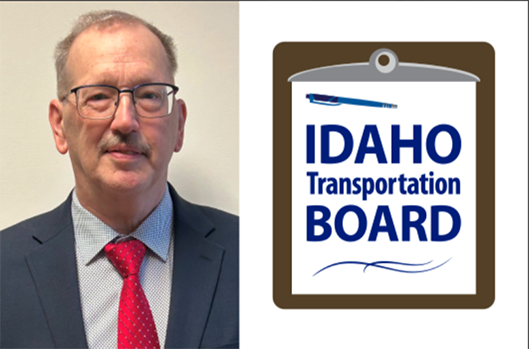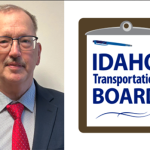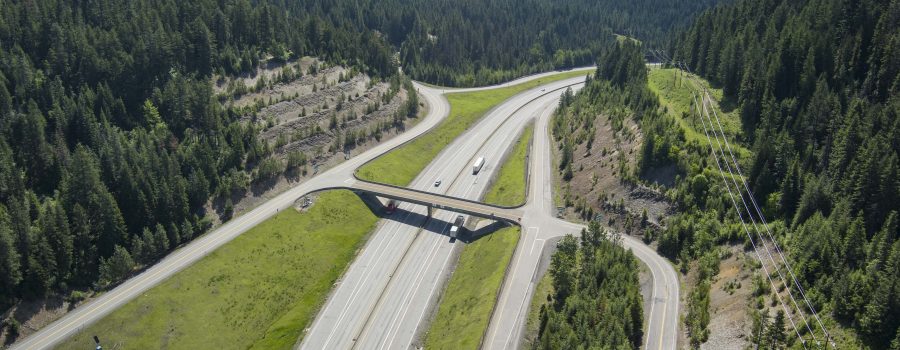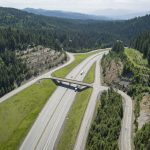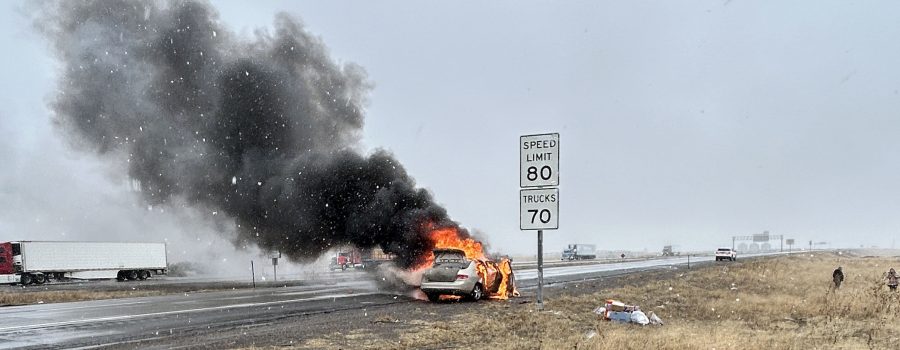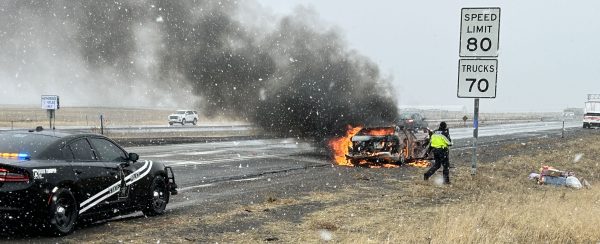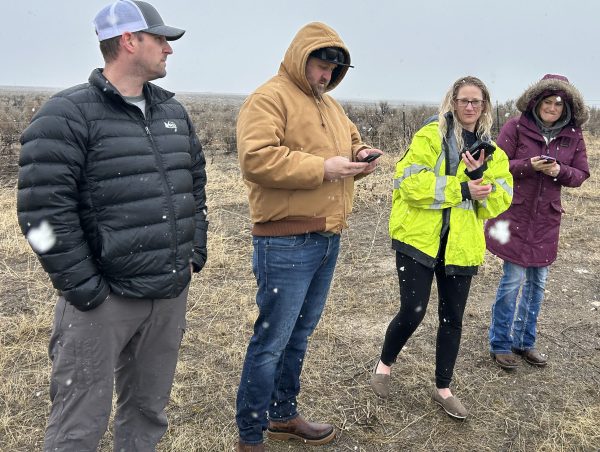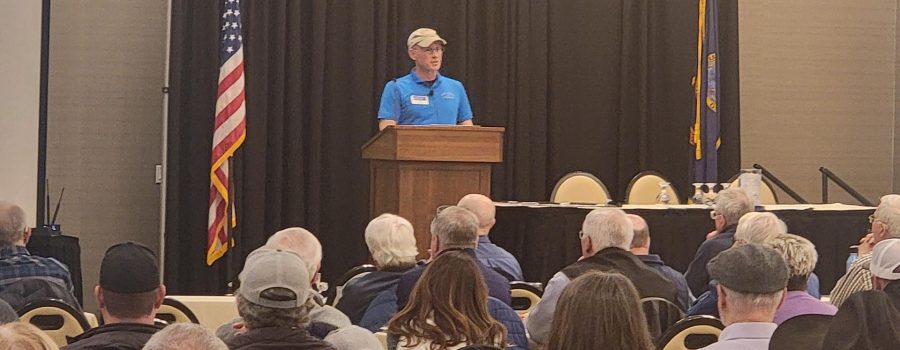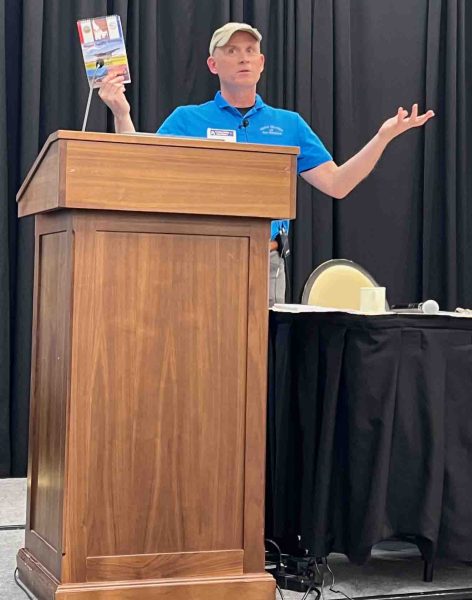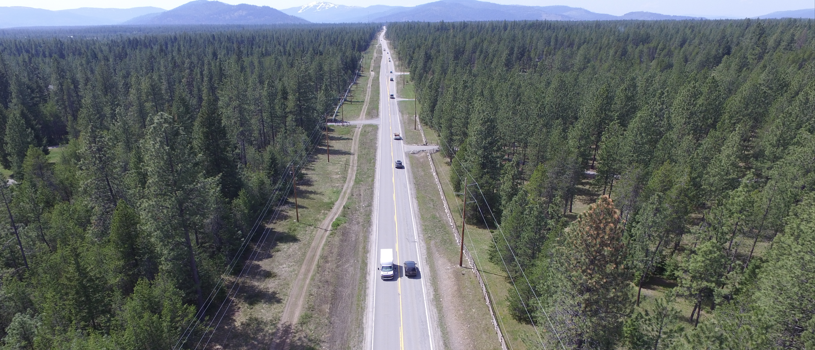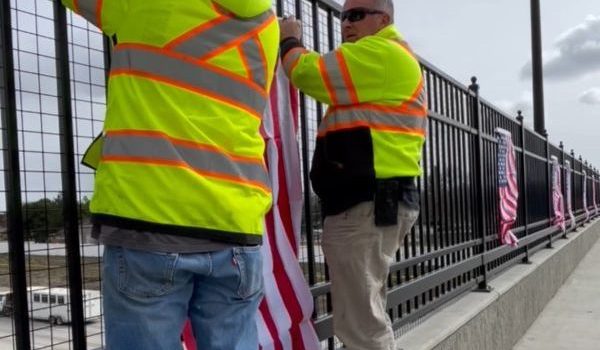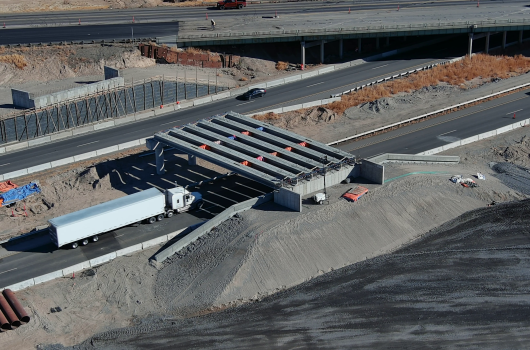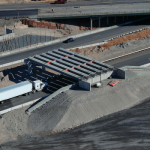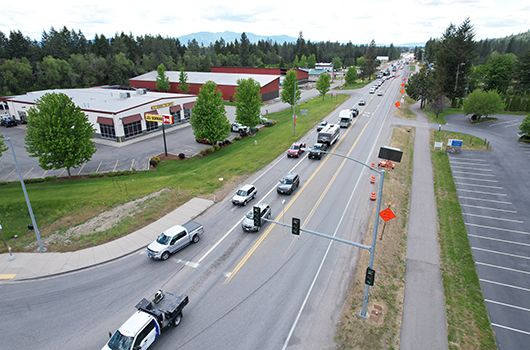With tree removal and utility relocation mostly complete, construction is set to begin on the stretch of highway from State Highway 41 to Greystone Road near Athol.
Starting next week the right of way along the south side of SH-54 – including the unofficial off-road trails – will be closed to all traffic due to the active work zone with heavy equipment. This closure is necessary to ensure the safety of everyone, including those using the trails, construction crews, and others on the adjacent roadway.
Why is the right of way area closing?
The first phase of highway expansion, which will occur from early spring through mid summer, will focus primarily on the south side of the highway. Significant demolition and construction will take place in the right of way area adjacent to the roadway, including excavation, ditching, and paving. This work will involve heavy equipment and work crews, making the area unpredictable and, more importantly, unsafe for any kind of traffic – both motorized and non-motorized. This includes motorcycles, ATV’s, side by sides, bikes, pedestrians, and equestrian riders.
We understand that these closures may cause frustration, especially for those who have come to rely on the trail as a secondary route of travel. The main concern, however, is safety.
Who will be affected?
All trail users will be affected by this closure, but with the proximity of both Timberlake High School and Middle School, it’s important for parents to understand this route will also not be accessible for students, teens or underage drivers who use the trail to get themselves back and forth to the schools or to their extracurricular activities.
What does this mean for off-road vehicle traffic?
Since the unpaved right of way area along SH-54 will be closed during construction, it will not be acceptable for any un-registered off-road vehicles or unlicensed drivers to use the state highway as an alternative route. Highway traffic is governed by strict regulations, and the presence of off-road vehicles or unlicensed drivers would pose serious safety risks to both those operating ORVs and other road users. Off-road vehicles cannot legally operate on public highways unless appropriately registered and licensed for street use.
To ensure everyone’s safety, all ORV users will need to plan alternative routes or transportation, and we ask that young, unlicensed drivers in particular, avoid using the highway as a shortcut.
We are committed to working together with the community to help navigate through this closure as safely as possible.
This project is essential for improving safety and infrastructure for everyone, including the students and families who use the highway every day. We appreciate your patience as the project moves forward and we will continue to provide updates on any other developments that may affect the community.
Will there be room for a new trail in the right of way after the project is complete?
No. Once the highway expansion project is completed in 2026, the entire width of the right of way will be dedicated to shoulder space and sloping to meet modern roadway engineering standards. This space is necessary to improve traffic flow and ensure the highway complies with current standards and practices that prioritize the safety of users. As a result, there will not be room for an off-road vehicle trail or shared use path in the right of way.
The expanded roadway is designed to accommodate future growth and to provide a safer, more efficient route for everyone. While this change may limit access to the area for off-road vehicles, the improvements will help reduce traffic hazards and provide a safer environment for all road users, including pedestrians and cyclists, by including 6 foot shoulders.
We encourage the community to explore alternative areas specifically designated for off-road use for recreation.




